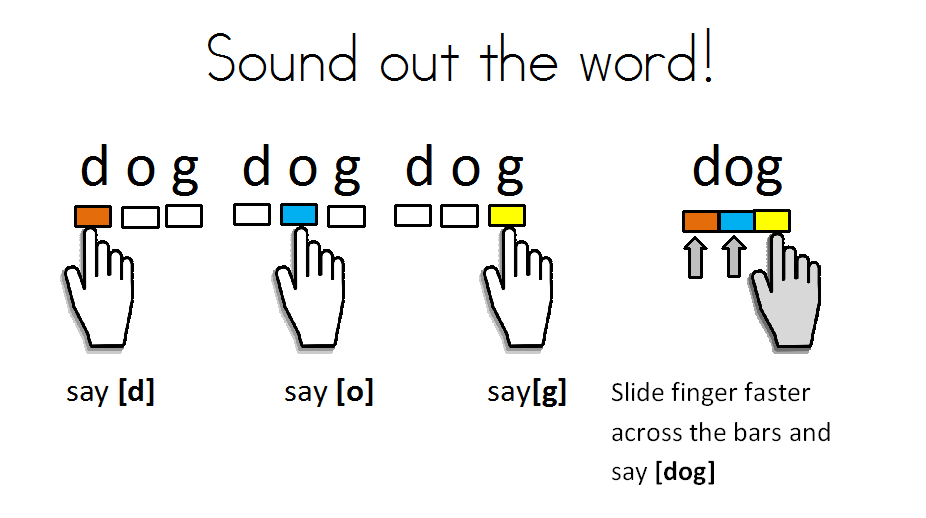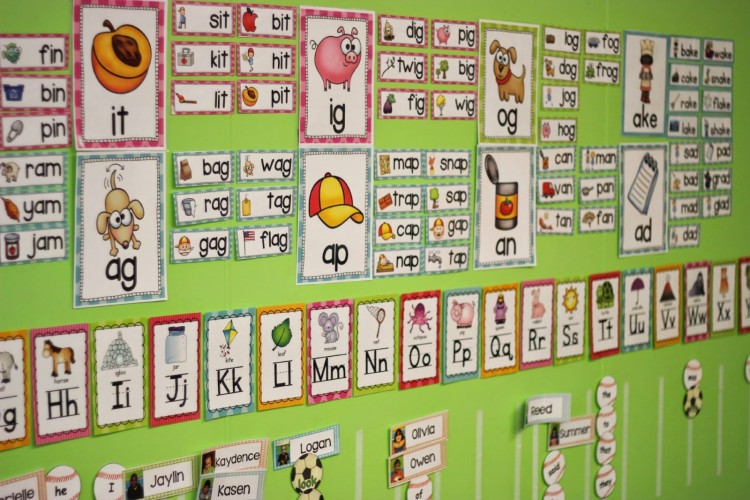RF.1.3.B.iv: Decode VC and CVC Words Beginning with Continuous Sounds (e.g. /f/, /m/, /r/)
Skill
RF.1.3.B.iv: Decode VC and CVC Words Beginning with Continuous Sounds (e.g. /f/, /m/, /r/)
Standard
CCSS.ELA-LITERACY.RF.1.3.B: Decode regularly spelled one-syllable words.
Description
- Mastery: Student silently decodes sounds and blends the whole word (whole word reading).
- Acquiring: Student segments each sound before reading the whole word (sound by sound blending). Student may make mistakes.
Probes
T:Read the following words: ram, hut, men, vin, nut, fed, rod, sin, lot, sad.
Or Use DIBELS NWF. Do a deeper probe analysis to see if students had any recurring errors.
Activities and Resources
Small Group Instruction – Direct Instruction
P.035 Encoding and Decoding Word Steps (Note: Use beginning continuous sounds only)
P.037 Encoding and Decoding Three-In-One (Note: Use beginning continuous sounds only)
P.039 Encoding and Decoding Make-A-Word (Note: Use beginning continuous sounds only)
Introduce Sounding Out (Small Group)
Sounding Out Accuracy (Small Group)
Alien Word Game (Small Group)
Holiday Relay (Small Group)
Letter Puzzles, p23 (Small Group, w/ Partners)
Blending – Be the Sound
Blending – Picture Puzzles
Blending -Slip and Slide Wordsplash
During Transition
Word Swatter Game
Blending CVC words- Starfall- 1 min. 46 sec.
Reinforce Skills/Independent Work Time – Independent/Small Group Center Activity
Flashcards
CVC Word Match Reading Puzzles
CVC Words
Clifford Make a Word
Display (e.g. Anchor Chart):
 |
| *Apply this strategy with words that begin with continuous sounds. Source: Reading Strategies |
 |
| *Use only words that begin with continuous sounds (see words circled). Source: Differentiated Kindergarten |
Considerations & Reminders
- Teachers should be very careful to correctly pronounce letter sounds and not inadvertently add the schwa sound – adding the schwa sound makes it more difficult for students to blend sounds into a whole word.
- Charts/posters that are displayed in the classroom do not have to be word lists; however you may display word families, if helpful for your students. When decoding, it may help for a student to have visuals that show/remind them the process for decoding or sounding out words.
- Teachers should be well versed in the levels of phonemic difficulty of words. Students should be taught to decode word types that are simple, to words that become more progressively complex, e.g. CVC, CCVC, CVCC, etc.
- It may help students to elongate sounds in order to blend them into whole words (e.g. rrrrrrrraaaaaaaammmmmm, ram).